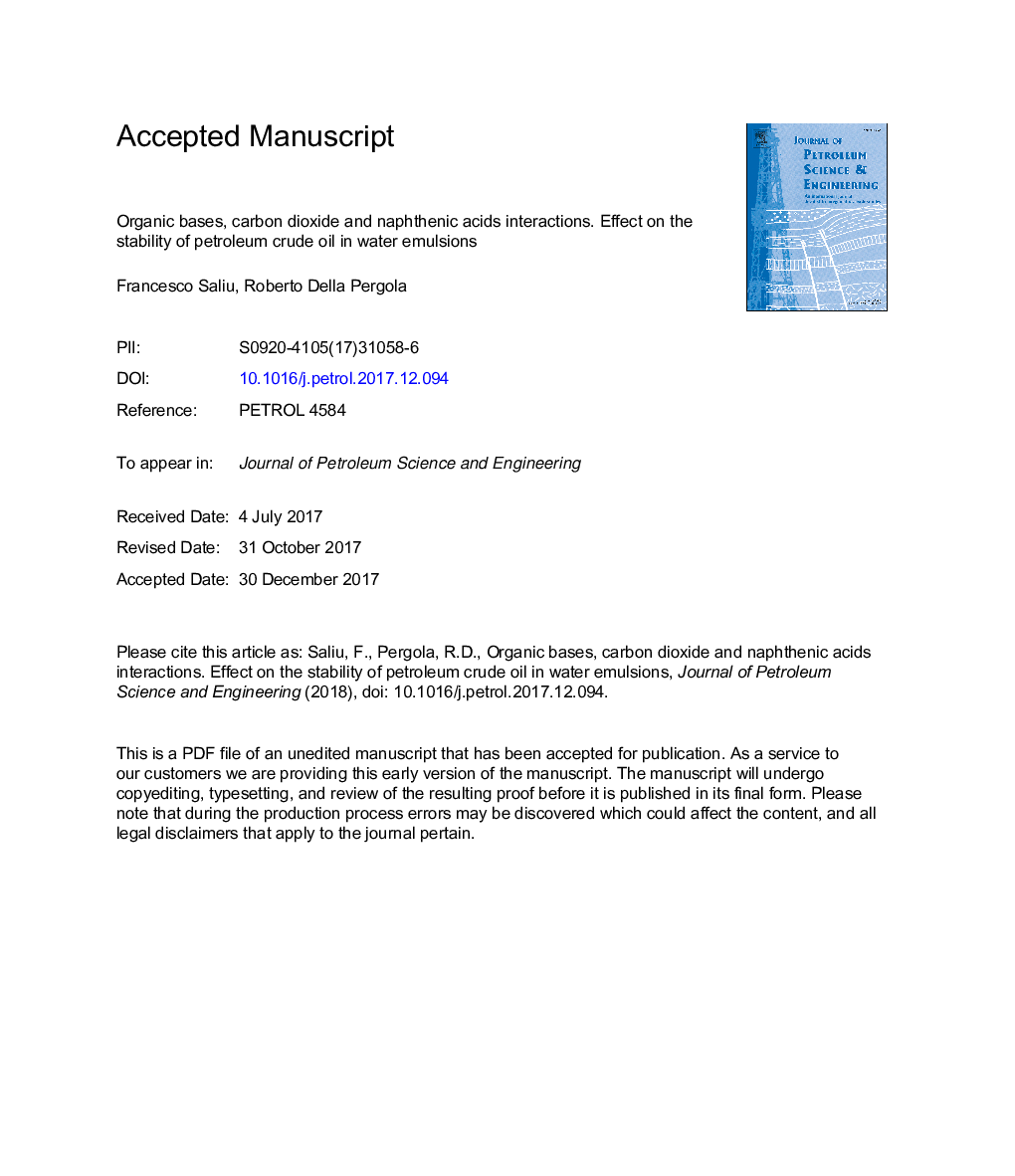| Article ID | Journal | Published Year | Pages | File Type |
|---|---|---|---|---|
| 8125276 | Journal of Petroleum Science and Engineering | 2018 | 26 Pages |
Abstract
Understanding the mechanisms that lead to the formation of petroleum crude oil in water emulsion is fundamental for the development of sustainable exploitation procedures and efficient oil spills remediation technologies. In this study we surveyed the effectiveness of different nitrogen-containing organic bases in promoting emulsification through the interaction with the naphthenic acid fraction present in crude oil. It was found that bulky secondary amines were the most effective, able to stabilize the emulsion at 10â¯wt% of oil content for more than 20â¯min, and the emulsion at 40â¯wt% for more than 5â¯h. Interfacial tension measurements indicated that the interaction was effective even when naphtenic acids were dosed at very low levels (total acid number lass than 0.3). It was also observed that a successive addition of carbon dioxide to the system readily induced the breaking of the emulsion, probably by affecting the equilibrium involved in the formation of the naphthenates stabilizing species. In the light of these findings, we tested polyethylene glycols bearing a terminal amino moiety as a new class of CO2 responsive emulsifiers suitable for the petroleum industry.
Related Topics
Physical Sciences and Engineering
Earth and Planetary Sciences
Economic Geology
Authors
Francesco Saliu, Roberto Della Pergola,
